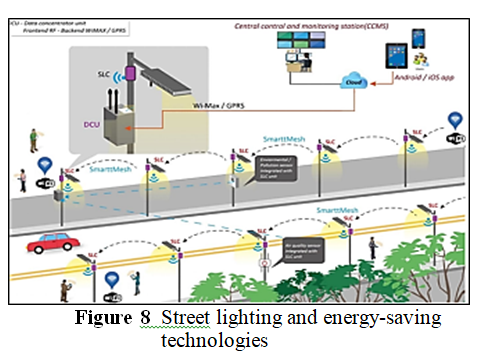The Impact of Technology on the Organization of The Urban Environment
Main Article Content
Abstract
Technological advancements have led to radical transformations in urban management patterns and the organization of the built environment, supporting planning and implementation processes with more efficient and flexible methods. Digital applications have contributed to improving the administrative performance of institutions involved in urban affairs by simplifying licensing procedures, monitoring regulatory compliance, and accelerating decision-making based on accurate and up-to-date data. In addition, the adoption of unified databases and interactive platforms has improved coordination between relevant entities, positively impacting the quality of urban planning and the integration of urban policies. Simulation and digital modeling techniques have also helped analyze future scenarios for urban expansion and assess the potential impact of proposed policies, enhancing decision-makers' ability to respond to developmental and environmental challenges more efficiently. In the same context, digital monitoring tools have contributed to strengthening oversight of urban project implementation and ensuring adherence to timelines and approved technical standards. Digital models have also made it possible to monitor the spatial distribution of services and infrastructure and analyze gaps, helping to direct public investment more efficiently. Digital transformation in urban management represents a fundamental step toward achieving good governance principles, contributing to enhanced transparency, improved resource allocation, and increased operational efficiency. Contemporary urban experiences demonstrate that integrating technology into urban planning is no longer an option, but rather a necessity to ensure the sustainability and resilience of cities in the face of rapid transformations.
Article Details

This work is licensed under a Creative Commons Attribution-NonCommercial-ShareAlike 4.0 International License.
Licensed under a CC-BY license: https://creativecommons.org/licenses/by-nc-sa/4.0/
How to Cite
References
M. Batty, K. W. Axhausen, F. Giannotti, A. Pozdnoukhov, A. Bazzani, M. Wachowicz, and Y. Portugali, “Smart cities of the future,” Eur. Phys. J. Spec. Top., vol. 214, no. 1, pp. 481–518, 2012, doi: 10.1140/epjst/e2012-01703-3.
F. A. J. Al-Arabi and A. R. S. Al-Arabi, “Technology and the Urban Future of the City: An Introduction to the Reconstruction of Benghazi,” Int. J. Tech. Sci., Univ. of Benghazi, 2019.
T. M. N. Aslim, “The Impact of Modern Technology on the Efficiency of Municipalities in Public Service Management,” Arab Soc. J. Publishing Sci. Stud., 2024.
S. Al-Thaher and Q. Shlehi-Rabhiya, “E-Governance and its Contribution to Improving Public Service in Municipalities,” Horizons Manage. Econ. Sci., vol. 3, no. 2, Univ. of Djelfa, Algeria, 2019.
ESCWA, “Technology and Innovation for the Development of Land Transport in Arab Countries,” United Nations, 2020.
W. Wasila Boufensh, “Renewable Energy in China: Lessons Learned,” J. Econ. Dev., Abdelhafidh Boussouf Univ. Center, no. 6, Algeria, 2018.
A. Omar Mudar Khalil, “Green Urban Growth Policies and Tools,” OECD, Egypt, 2020.
Y. Han, T. Shevchenko, D. Qu, and G. Li, “Smart E-waste management in China: A review,” ResearchGate, 2022, doi: 10.1007/978‑981‑16‑9113‑3_38.
S. M. Cheema and H. Abdullah, “Smart waste management and classification systems using cutting‑edge approach,” Unpublished, ResearchGate, 2022, doi: 10.3390/su141610226.
Zajecar, “The impact of the Covid‑19 pandemic on economy, resources, and sustainable development,” Megatrend Univ. Belgrade, Faculty of Management Zaječar, 2022, doi: 10.35784/pe.2021.2.07.
H. Mahmood and K. Mahdi, “Modern technologies as urban management tools that work to sustain and develop urbanization in cities,” J. Phys.: Conf. Ser., 2020, doi: 10.1088/1742-6596/1773/1/012034.
S. Bdeir and M. Abboud, “Building GIS data & sustainable master plan for Haddatha village,” Lebanese Int. Univ., Dept. of Surveying Eng., Lebanon, 2021, doi: 10.1051/e3sconf/202126603017.
Ministry of Municipal and Rural Affairs, City Profile Hariman Pinar Salvatore Fundaro Costanza Meluntia, 2019.
F. A. Al-Hakim, “Elements of Smart City Planning / Smart Street Lighting: Specifications and Codes – Experiences of Some Arab and International Countries,” J. Egypt. Soc. Eng., vol. 61, no. 2, 2022.
T. R. Achar and Shreyas, “Smart automated highway lighting system using IoT: a survey,” Manipal Inst. Technol., Manipal Acad. Higher Educ., Bengaluru, India, 2024, doi: 10.1186/s42162-024-00375-7.
Equitas – International Center for Human Rights Education, “Using Technology to Promote Civic Participation and Human Rights,” Canada, 2021.
SDAIA, “Data and Artificial Intelligence Radar,” Saudi Authority for Technology and Artificial Intelligence, Riyadh, Saudi Arabia, 2024.
N. M. V. Ngoc and T. Tran, “Advantages and challenges of applying BIM in urban technical infrastructure projects,” E3S Web Conf., 2023, doi: 10.1051/e3sconf/202340304001.





